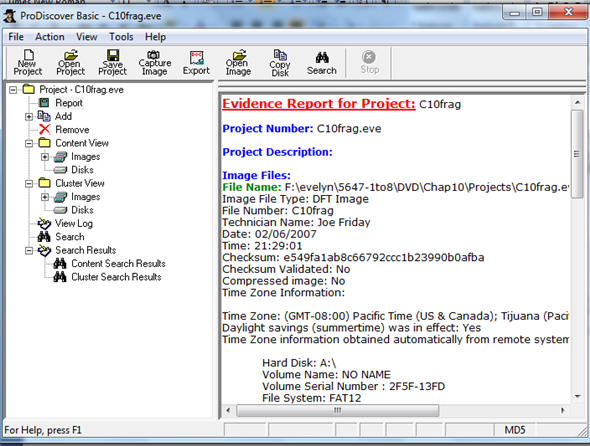

These EMF files can be indispensable and can provide an empirical evidence for forensic purposes.

In a RAW mode, the print job merely provides a straight graphic dump of itself, whereas with an EMF mode, the graphics are converted into the EMF image format (Microsoft Enhanced Metafile). Moreover, the printer configuration is required to be set in either EMF mode or RAW mode. When a user sends a print command from a computer to the printer, the print spooling process creates a “print job” to some files that remain in the queue unless the print operation is completed successfully.
#Prodiscover basic copy to disk windows#
#Prodiscover basic copy to disk mac os#
Another important aspect of OS forensics is memory forensics, which incorporates virtual memory, Windows memory, Linux memory, Mac OS memory, memory extraction, and swap spaces. Data and file recovery techniques for these file systems include data carving, slack space, and data hiding. There are many file systems introduced for different operating systems, such as FAT, exFAT, and NTFS for Windows Operating Systems (OSs), and Ext2fs, or Ext3fs for Linux OSs. The file system also identifies how hard drive stores data. The file system provides an operating system with a roadmap to data on the hard disk. Overview: The understanding of an OS and its file system is necessary to recover data for computer investigations. The aim of collecting this information is to acquire empirical evidence against the perpetrator. What is Operating system forensics?ĭefinition: Operating System Forensics is the process of retrieving useful information from the Operating System (OS) of the computer or mobile device in question. Modern OSs track a good deal of information that could become artifacts of evidentiary value on the eve of forensic examination. The forensic examiner must understand OSs, file systems, and numerous tools required to perform a thorough forensic examination of the suspected machine.


 0 kommentar(er)
0 kommentar(er)
